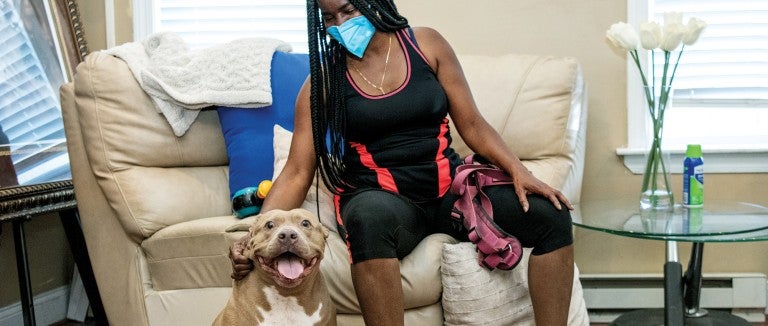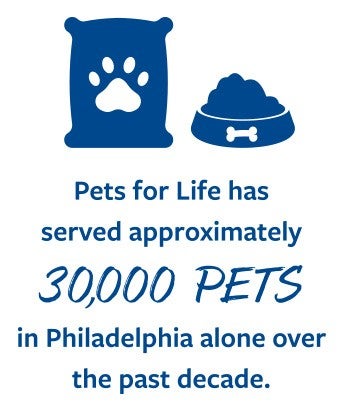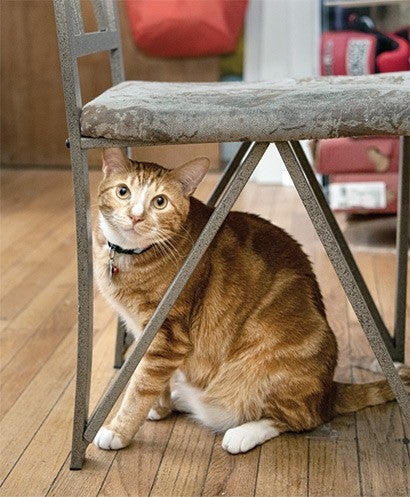After more than a year of life in lockdown, Drama’s not used to having multiple visitors vie for her attention. The pup is peering shyly out from her crate and letting her feline brother, Mr. Mo, hog the spotlight as members of the HSUS Pets for Life team in Philadelphia drop off leashes and cat litter on a hot August afternoon. But Drama’s owner, Denise Young, is overjoyed to welcome these familiar faces back into her Fairhill home—if it weren’t for them, Drama probably would’ve died almost three years ago.
“They literally saved her life,” says Young. Drama had developed pyometra, a life-threatening uterine infection. She needed an emergency spay surgery—one that cost $6,000. As Young frantically weighed her options, someone slipped her a phone number. Enter Pets for Life.
The Humane Society of the United States launched Pets for Life in 2011 to increase equity in access to pet resources—such as spay/neuter surgeries, veterinary care and other services and supplies—for those who live in areas with high rates of poverty. It’s rooted in the understanding that everyone loves their pets, but some people face structural challenges to obtaining what they want and need for them.
Over the past decade, Pets for Life has served approximately 30,000 pets in Philadelphia alone, 81% of whom had never been to a veterinarian—not for lack of their owners’ desire but rather due to barriers such as cost and transportation. Many of the program’s clients have had negative experiences with enforcement agencies or faced racial profiling and other institutional discrimination, which can justifiably create distrust. These issues aren’t unique to Philadelphia; nationwide, there are millions of people like Young and pets like Drama waiting for animal welfare to create a more equitable system.
Far too many people are having to disproportionately work harder and spend more. This is everywhere.
Amanda Arrington, The HSUS
People are doing the best they can, says Amanda Arrington, senior director of Pets for Life. “Far too many people are having to disproportionately work harder and spend more. This is everywhere. This is the crisis in companion animal welfare right now, and it has been for a long time.”
Then throw a global pandemic into the mix.
The first few months were the hardest, says community organizer Carmen Alvarez: “It broke my heart.”
Before everything shut down, the team was facilitating an average of 300 spay/neuter surgeries each month. During pandemic lockdowns, spay/neuter wasn’t considered an essential service.
“That had serious repercussions,” Arrington says, as did COVID-19’s economic impact. “Vulnerable communities are even more financially distressed now; it’s this sort of perfect storm of limited infrastructure and greater demand. How do we continue to be there for the community through that?”
Want more content like this?
This was written and produced by the team behind All Animals, our award-winning magazine. Each issue is packed with inspiring stories about how we are changing the world for animals together.
Learn MoreSubscribe


